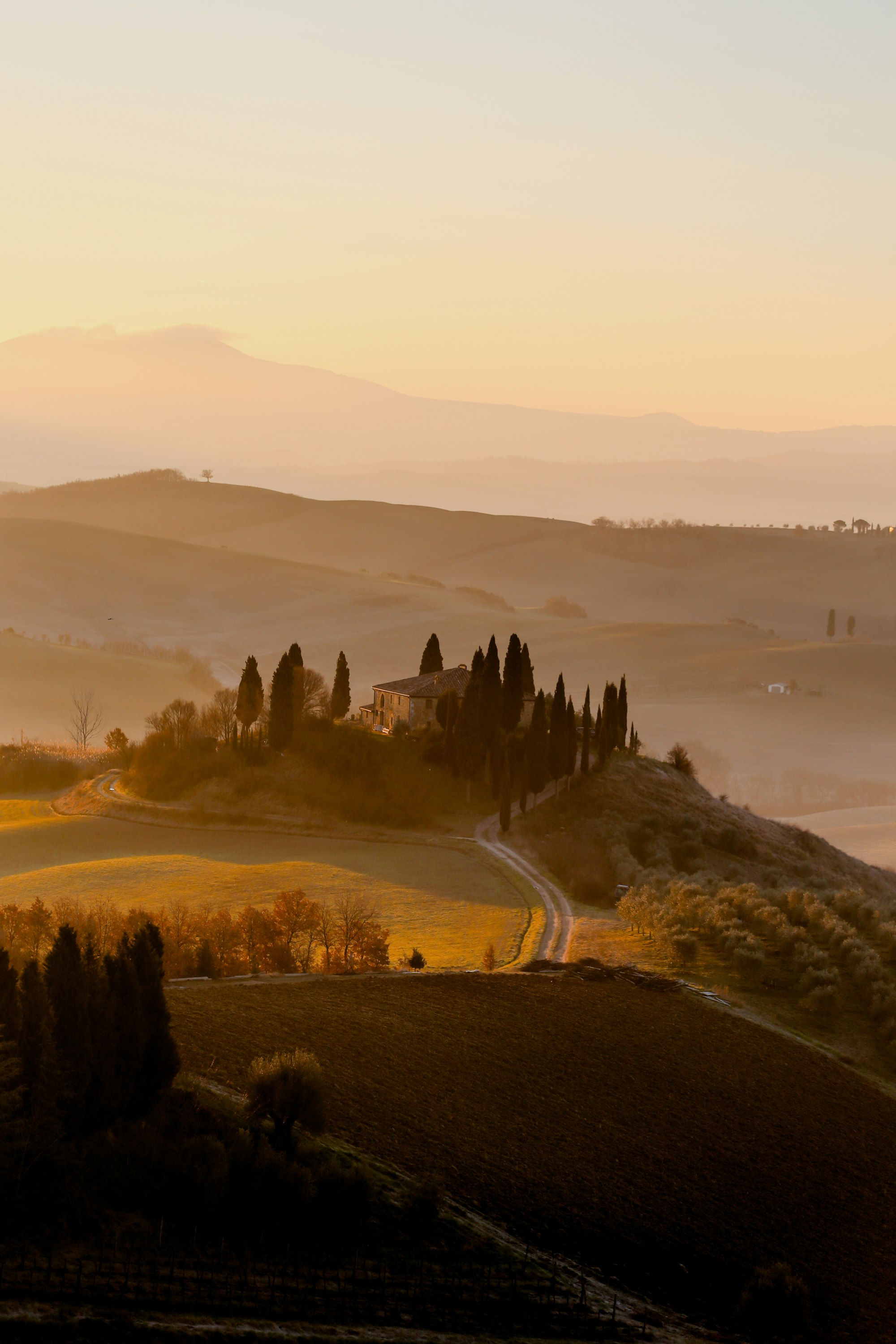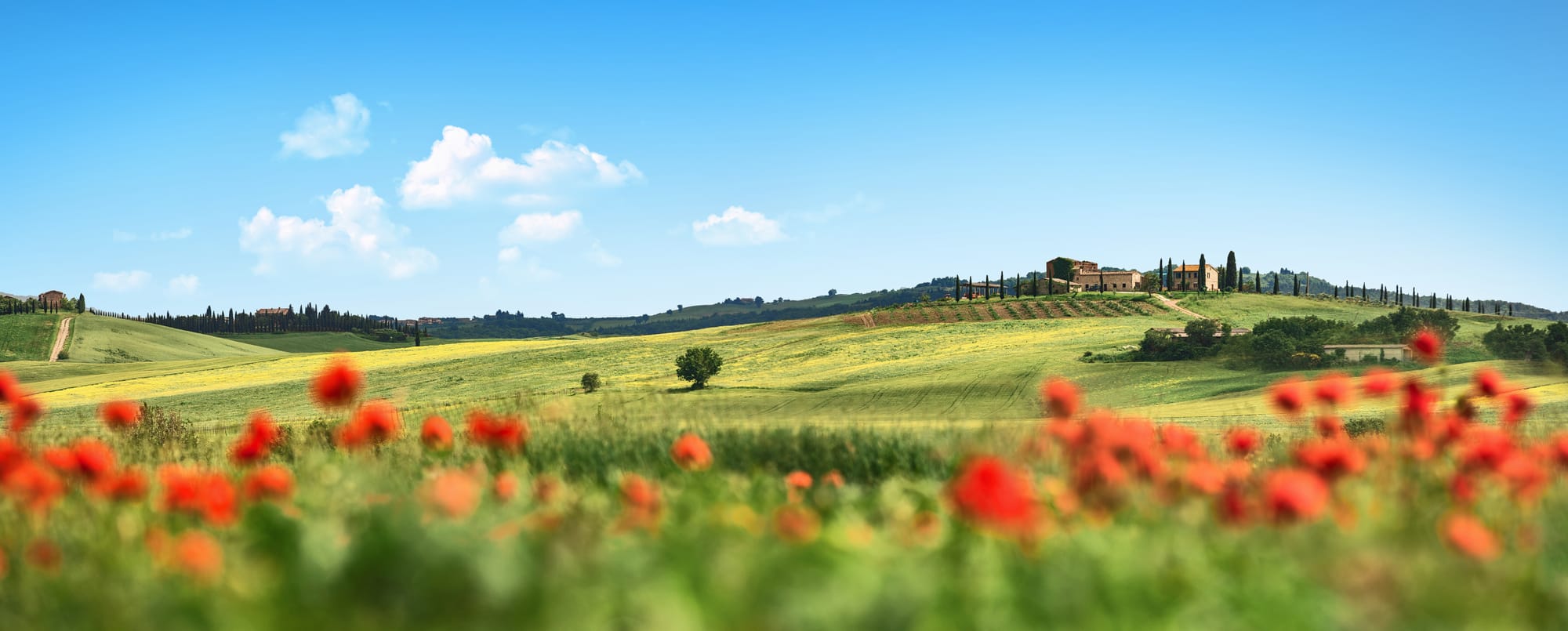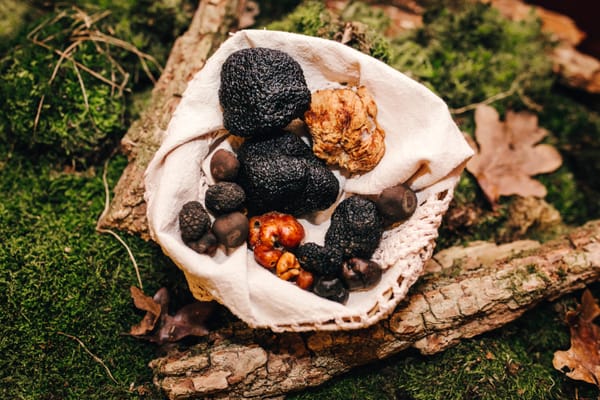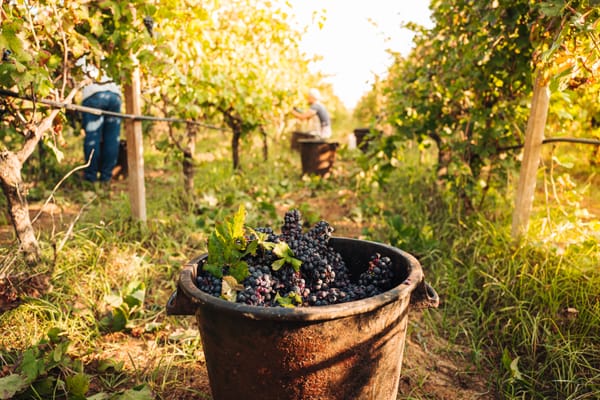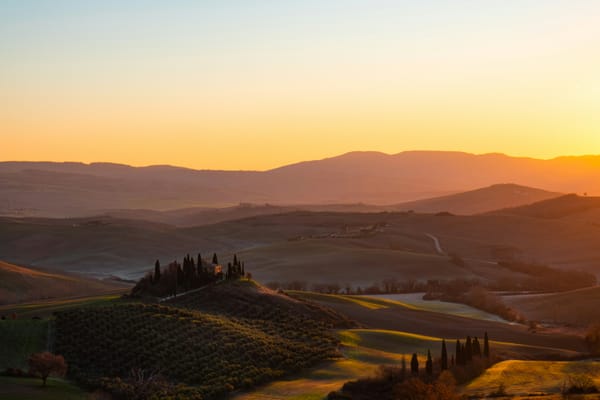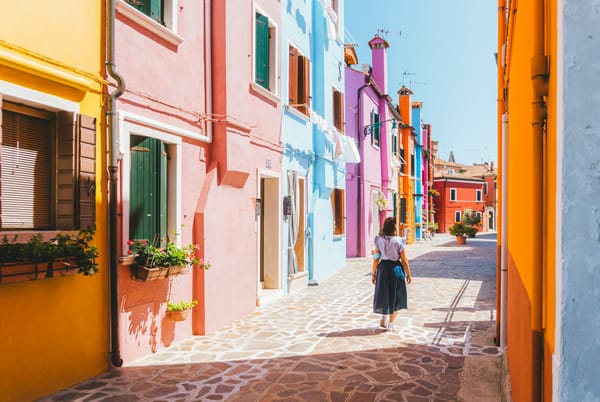Italy offers a dramatically different experience depending on the time of year: more than just a shift in weather, the changing seasons transform the nation's landscapes, daily rhythms, and cultural offerings. Understanding this seasonal cadence is the foundational step for any traveler looking to craft an authentic and deeply personal Italian journey.
This guide moves beyond simple temperature charts to explore the distinct character of each season—the atmosphere, the regional opportunities, the flavors on the table, and the practical considerations for planning. From the alpine chill of the north to the sun-drenched shores of the south, Italy's climate is as varied as its culture, making the choice of when to visit a crucial element of the travel experience.
In this article:
September 22, 2025: this content has been updated for accuracy and freshness.
Weather in Italy: a guide to regional climates
Before delving into the individual seasons, it's essential to understand Italy's primary climatic division.
- Northern Italy (e.g., Milan, Venice, the Dolomites): Experiences a more continental climate with distinct seasons. Winters are often cold, with snow in the mountains and fog in the Po Valley. Summers can be hot and humid.
- Central Italy (e.g., Florence, Rome, Umbria): Features a Mediterranean climate that is generally milder. Winters are cooler and can be wet, while summers are long, hot, and dry.
- Southern Italy & the islands (e.g., Naples, Sicily, Sardinia): Boasts a classic Mediterranean climate with very mild, short winters and long, hot, arid summers. The season for swimming and sunbathing starts earlier and ends later here than anywhere else in the country.
This geographical variance means that "spring" in Sicily can feel like "summer" in the Dolomites. Acknowledging this is key to planning a successful itinerary.
- Learn more about the various regions of Italy.
Spring in Italy (Primavera): weather, crowds & things to do
Visiting Italy in spring means experiencing the country at its most vibrant. From late March through May, the weather is pleasantly mild, the landscapes are in full bloom, and you can enjoy the main attractions with fewer crowds than in summer. It’s the ideal season for travelers who want to combine cultural tours with outdoor exploration in comfortable temperatures. This guide covers everything you need to know about a spring trip to Italy.
What is the weather like in Italy in spring?
Spring weather in Italy is generally beautiful, but it can be unpredictable and varies significantly by region. Layers are always your best friend.
- Northern Italy: March can still be cold, with snow in the Alps. By May, cities like Milan and Turin, and the lakes like Como and Garda, are pleasantly warm and perfect for sightseeing.
- Central Italy: April and May are arguably the best months to visit Tuscany and Umbria. Expect warm, sunny days perfect for photography, with occasional rain showers that make the green hills even more vivid.
- Southern Italy & Islands: The south warms up quickly. By April, Sicily, Puglia, and the Amalfi Coast can feel like early summer, making it warm enough for the first beach days of the year.
Top 10 things to do in Italy in spring
Spring’s mild climate makes it the perfect time for both city sightseeing and enjoying Italy's natural beauty. Here are some of the best activities:
- Explore ancient sites comfortably: Visit Pompeii, Herculaneum, or Rome's Colosseum and Roman Forum without the intense summer heat.
- See Italy’s gardens in full bloom: This is the prime season for botanical gardens like Villa d'Este in Tivoli, Villa Carlotta on Lake Como, and the Boboli Gardens in Florence.
- Go hiking in national parks: The pleasant temperatures are ideal for trekking in the Dolomites (late spring), the Apennines, or the coastal paths of the Cinque Terre.
- Experience Easter (Pasqua) festivities: Witness traditional and solemn Easter week processions, a major cultural event, especially in cities like Trapani (Sicily) or throughout Umbria.
- Wander through timeless cities: Get lost in the canals of Venice, admire the Renaissance art of Florence, and enjoy Rome's piazzas before the peak season rush.
- Attend a flower festival (Infiorata): In May and June, many towns (like Noto in Sicily and Spello in Umbria) create stunning carpets of flower petals on their streets.
- Drive through the Tuscan countryside: Rent a car and explore the rolling hills of the Val d'Orcia, blanketed in green grass and red poppies.
- Discover Italy's famous lakes: Enjoy boat trips on Lake Como, Lake Garda, or Lake Maggiore as the villas and villages reopen for the season.
- Taste seasonal delicacies: Join a food tour focused on spring produce like artichokes and asparagus.
- Hit the beach early: In May, head to the beaches in Sardinia or Sicily to enjoy the sun and sea with far fewer people.
What to eat in spring: Italy's seasonal foods
Spring cuisine in Italy is all about fresh, green, and vibrant flavors. When dining out, look for these seasonal ingredients on the menu:
- Vegetables: Artichokes (carciofi), especially the Roman variety; wild asparagus (asparagi selvatici); fava beans (fave); and sweet peas (piselli).
- Cheeses: Fresh and young pecorino cheese, often served with fava beans.
- Fruits: The first delicious strawberries (fragole) of the season start appearing in markets everywhere.
- Pasta dishes: Look for pasta with pesto, which is at its best with fresh spring basil, or simple dishes featuring spring vegetables.
What to pack for Italy in spring
Packing for spring in Italy requires smart preparation for variable weather. Here’s a quick checklist:
- Layers are essential: Pack t-shirts, long-sleeved shirts, and light sweaters or a fleece.
- A waterproof jacket: A light raincoat or windbreaker is crucial for unexpected spring showers.
- Comfortable walking shoes: You will be walking a lot. Make sure they are broken in. Waterproof shoes are a plus.
- An umbrella: A small, travel-sized umbrella is always a good idea.
- Sunglasses and sunscreen: The spring sun can be surprisingly strong, especially in the south.
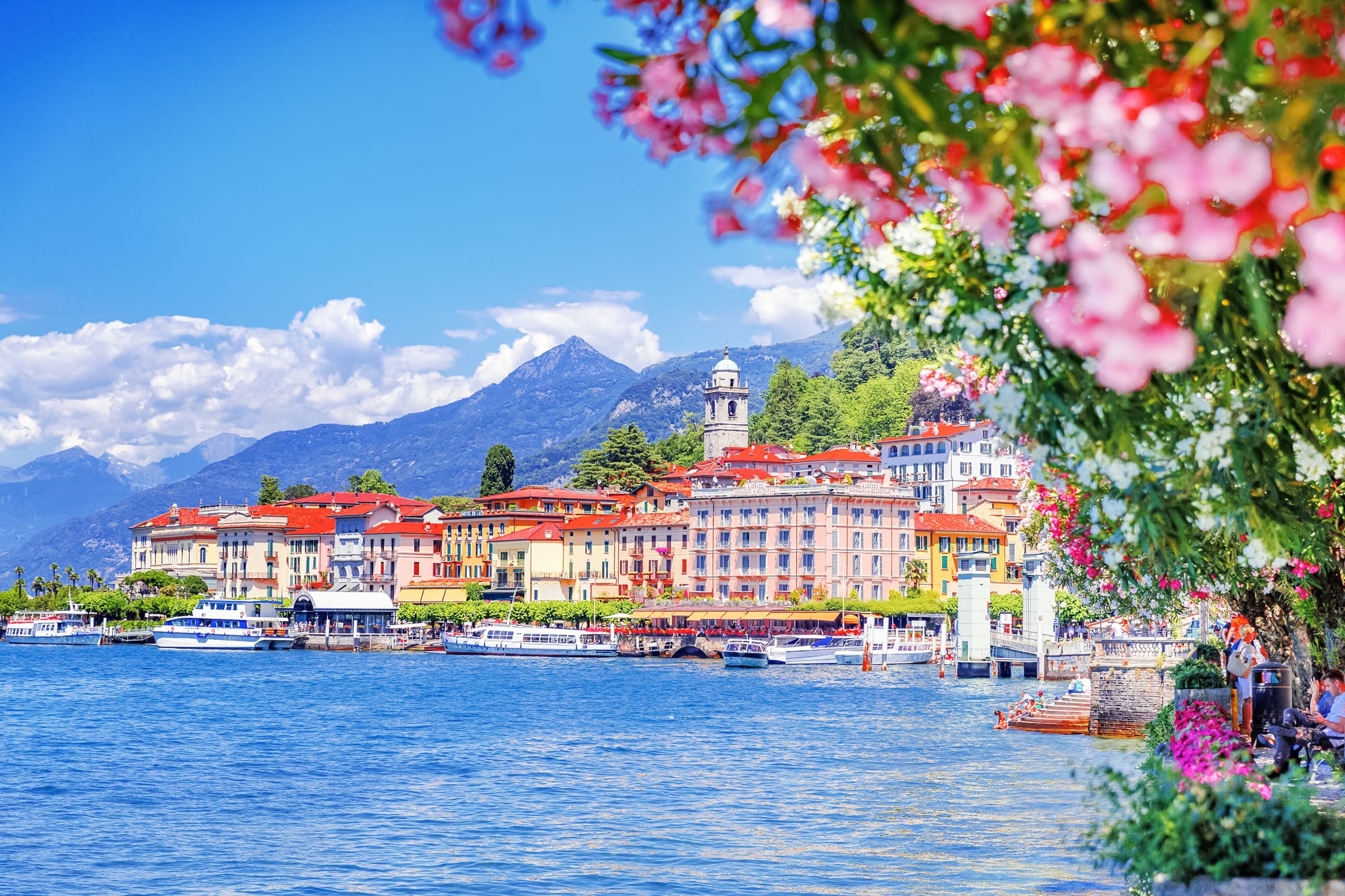
Summer in Italy (Estate): how to handle heat & crowdse
Summer in Italy is the classic dream of la dolce vita, but it's also the busiest and hottest time of year. Planning a trip between June and August requires a smart strategy to embrace the energy while navigating the challenges. This is the season for living life outdoors, from sun-drenched beaches to lively evening piazzas. This guide provides practical tips on where to go, what to do, and how to make the most of an Italian summer.
What is the weather like in Italy in summer?
Expect heat and sun, especially in July and August. The climate varies from the humid heat of the cities to the breezy coasts and cool mountains.
- Northern Italy: Cities like Milan and Bologna can be hot and humid. For relief, head to the mountains; the Alps and Dolomites offer cool, dry air and perfect conditions for hiking.
- Central Italy: Rome and Florence can be oppressively hot, with daytime temperatures often exceeding 35°C (95°F). Plan sightseeing for the early morning or evening.
- Southern Italy & Islands: This region experiences relentless sun and high temperatures. It's the ideal climate for enjoying the sea in Puglia, Sicily, and Sardinia. Be prepared for the scirocco, a hot wind from Africa that can make temperatures soar.
Top 10 things to do in Italy in summer
Summer is all about embracing the sea, seeking refuge in the mountains, and enjoying the vibrant outdoor culture. Here are the top experiences:
- Relax on world-class beaches: This is the prime season for the coastline. Discover the crystal-clear waters of Sardinia, the charming coves of the Amalfi Coast, or the lively beach clubs of Puglia.
- Escape the heat in the mountains: If the urban heat is too much, head north. The Dolomites and the Aosta Valley offer stunning scenery, fresh air, and a paradise for hikers and nature lovers.
- Experience open-air opera and concerts: Summer is festival season. The most iconic event is the Verona Opera Festival in a breathtaking Roman amphitheater. Many towns also host outdoor concerts and film screenings.
- Go island hopping in the Mediterranean: Charter a boat or take a ferry to explore Italy's stunning archipelagos. Discover the volcanic beauty of the Aeolian Islands off Sicily or the pristine beaches of the Tuscan Archipelago, including Elba.
- Explore the great northern lakes: As an alternative to the crowded coast, the Italian lakes are magnificent in summer. Enjoy watersports on Lake Garda, visit glamorous villas on Lake Como, or relax on the shores of Lake Maggiore.
- Attend a local food festival (sagra): Summer is peak season for sagre, lively village festivals celebrating a specific local food, from truffles to fish to wine. It's an authentic way to taste local culture and cuisine.
- Enjoy the evening 'aperitivo' and outdoor dining: As the sun sets, life moves to the piazzas. Do as the Italians do and enjoy a pre-dinner drink (aperitivo) and a long, leisurely dinner at an outdoor trattoria.
- Discover charming seaside villages: Go beyond the beach and explore the towns themselves. Wander the narrow streets of the Cinque Terre villages, admire the cliffside houses of Positano, or visit the whitewashed town of Polignano a Mare in Puglia.
- Take a scenic coastal drive: Rent a car and experience one of the world's most beautiful drives along the Amalfi Coast (best done with a confident driver!) or explore the less-traveled coastline of Basilicata or Calabria.
- Plan around the Ferragosto holiday: Be aware of August 15th (Ferragosto). It's a major national holiday when most Italians are on vacation. Coastal towns will be at absolute peak capacity, while major cities can be quiet with many shops and restaurants closed. Plan accordingly.
What to eat in summer: Italy's seasonal best
Summer cuisine in Italy is light, fresh, and celebrates sun-ripened produce. Don't leave without trying:
- Classic summer vegetables: Ripe tomatoes, eggplant (melanzane), zucchini, and bell peppers are in every dish, from caponata in Sicily to peperonata.
- Fresh seafood: Along the coast, enjoy simple grilled fish (pesce alla griglia) and seafood pastas.
- Simple, fresh dishes: Think insalata caprese (tomato, mozzarella, basil), prosciutto with melon, and fresh pesto pasta.
- Seasonal fruit: Indulge in sweet peaches (pesche), apricots (albicocche), figs, and watermelon (cocomero).
- Gelato: An absolute daily necessity to cool down.
What to pack for Italy in summer
Packing light is key. Focus on breathable fabrics and sun protection. Here's a quick checklist:
- Lightweight clothing: Linen and cotton are your best friends. Pack shorts, t-shirts, sundresses, and light trousers.
- Sun protection essentials: A wide-brimmed hat, high-SPF sunscreen, and quality sunglasses are non-negotiable.
- Swimwear: Pack at least two swimsuits if you plan on visiting the coast or a lake.
- Comfortable sandals or espadrilles: Choose comfortable footwear for walking on cobblestones.
- A reusable water bottle: Stay hydrated by refilling at the many public water fountains (nasoni in Rome).
- A light cover-up: A light scarf or cardigan is needed to cover shoulders when entering churches.
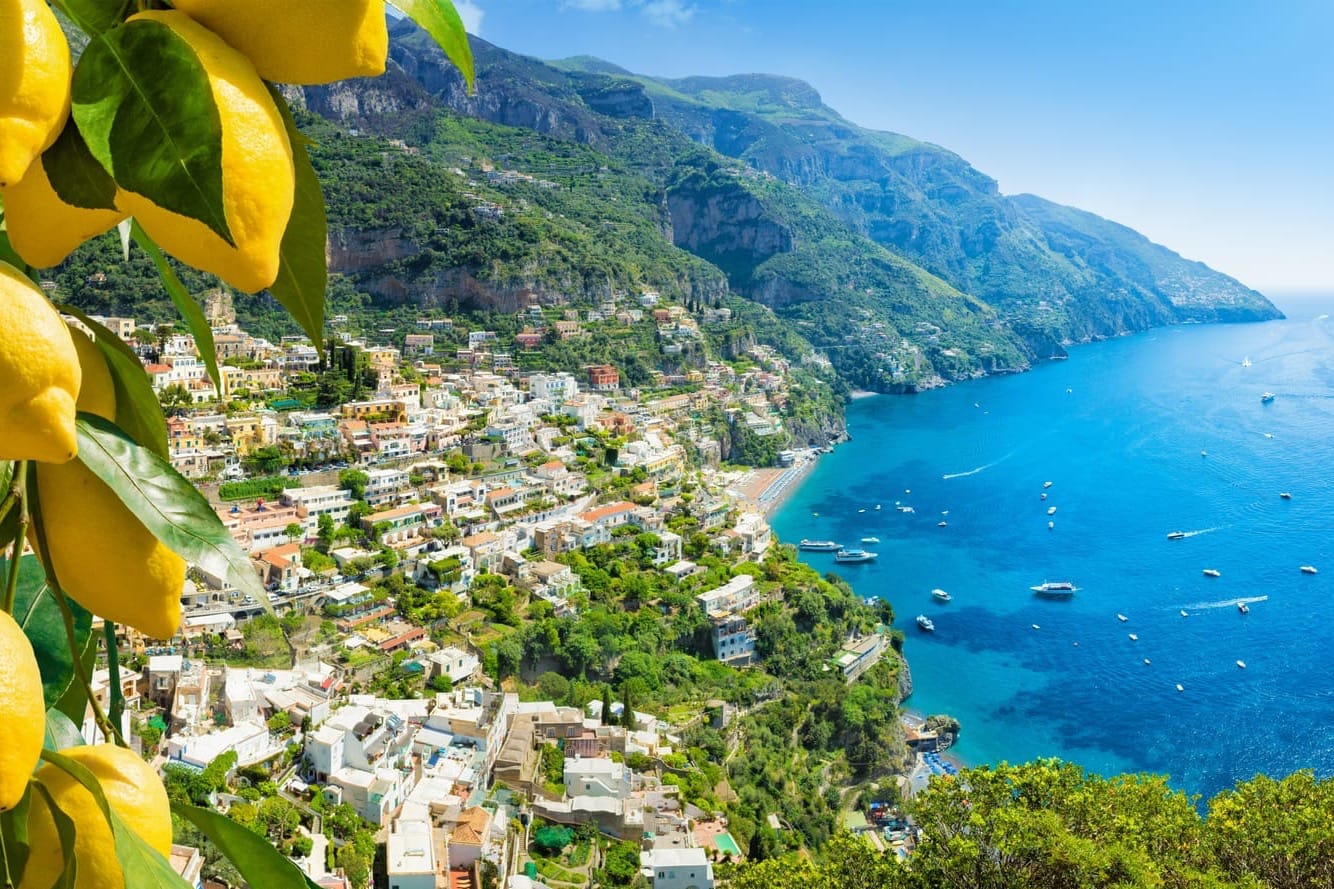
Fall in Italy (Autunno): best for food, wine & fewer crowds
For many seasoned travelers, fall is the absolute best time to visit Italy. Running from September through November, this shoulder season offers a perfect blend of warm weather, significantly fewer crowds, and a culinary scene at its absolute peak. The harsh summer light softens into a golden glow, and a cozy, contemplative energy settles over the landscape. It is the season of the harvest—a time of abundance that makes for an unforgettable trip.
What is the weather like in Italy in fall?
Fall weather is famously pleasant but becomes more unpredictable as the season progresses. Expect gorgeous, sunny days in the early months, with an increasing chance of rain by November.
- Northern Italy: September often feels like a warm extension of summer. By October, the air is crisp and cool, and the foliage in wine regions like Piedmont and Lombardy is spectacular. November can be chilly and foggy.
- Central Italy: September and October offer some of the best weather of the year, with warm, sunny days ideal for exploring the countryside of Tuscany and Umbria.
- Southern Italy & Islands: The south stays warm the longest. The sea is often warm enough for swimming well into October, and the summer's intense heat has subsided, making it perfect for sightseeing.
Top 10 things to do in Italy in fall
Autumn is a paradise for food lovers and culture seekers. With comfortable temperatures and fewer tourists, it's the ideal time to explore deeply. Here are the top experiences:
- Witness the grape harvest (Vendemmia): In September and early October, witness the grape harvest in regions like Tuscany (Chianti), Piedmont (Barolo), or Veneto (Prosecco). Many wineries offer special tours and tastings.
- Go truffle hunting in Piedmont or Umbria: Fall is the season for Italy's precious truffles. Join a guided truffle hunt with a local expert and their dog, or visit the world-famous Alba White Truffle Festival (Fiera Internazionale del Tartufo Bianco d'Alba).
- Feast at local harvest festivals (Sagre): Nearly every weekend, villages across Italy host sagre celebrating the local harvest. Look for festivals dedicated to mushrooms (funghi), chestnuts (castagne), chocolate, and new wine (vino novello).
- See the stunning fall foliage: While not like New England, Italy has incredible fall colors. The best places to see them are the vineyards of Piedmont, the national parks in the Apennines, and the forests of the Dolomites.
- Explore iconic cities without the crowds: This is the perfect time to visit Rome, Florence, and Venice. The weather is ideal for walking, and you'll experience shorter lines at major attractions like the Colosseum and the Uffizi Gallery.
- Experience the olive harvest: From late October through November, witness the olive harvest, especially in regions like Umbria, Tuscany, and Puglia. Be sure to taste the fresh, peppery olio nuovo (new oil).
- Enjoy late-season beach days in the south: The beaches of Sicily and Puglia are beautiful and largely empty in September and October, but the water is still warm enough for a swim.
- Hike in comfortable temperatures: The cooler, crisp air makes fall an amazing season for hiking. Explore trails in the Dolomites (early fall), the hills of Tuscany, or along the Amalfi Coast.
- Indulge at the EuroChocolate festival: Chocolate lovers should head to Perugia (Umbria) in October for one of Europe's largest chocolate festivals, featuring artisans from all over the world.
- Visit Venice during an 'Acqua Alta': While it can be a nuisance, witnessing a high tide (acqua alta) event in Venice (most common in November) is a unique and memorable experience, showing the city's incredible resilience.
What to eat in fall: Italy's harvest table
The autumn table in Italy is rich, earthy, and comforting. It’s a celebration of the harvest. Be sure to try:
- Mushrooms and truffles: Look for fresh porcini mushrooms (funghi porcini) on pasta or as a side dish, and indulge in anything with freshly shaved truffle (tartufo).
- Harvest vegetables and fruits: This is the season for pumpkin-filled pasta (tortelli di zucca), roasted chestnuts (castagne), figs, and pomegranates.
- Game meats: In regions like Tuscany and Umbria, look for hearty dishes with wild boar (cinghiale) or hare (lepre).
- New wine and olive oil: Taste the young, fruity vino novello and the peppery, vibrant new olive oil (olio nuovo), often served simply on toasted bread.
- Hearty red wines: It's the perfect time to enjoy a robust Barolo from Piedmont or a Brunello from Tuscany.
What to pack for Italy in fall
Packing for fall requires versatile layers to handle sunny days and chilly evenings. Here's a quick checklist:
- Layers are key: Pack a mix of t-shirts, long-sleeved shirts, and light-to-medium sweaters (cashmere or merino wool are great).
- A stylish, mid-weight jacket: A leather jacket, a trench coat, or a light wool coat is perfect.
- A large scarf: The perfect accessory for both warmth and style.
- Waterproof shoes or boots: Ankle boots are ideal for city walking and can handle unexpected rain.
- An umbrella: A small, sturdy umbrella is a must-have, especially from late October onwards.
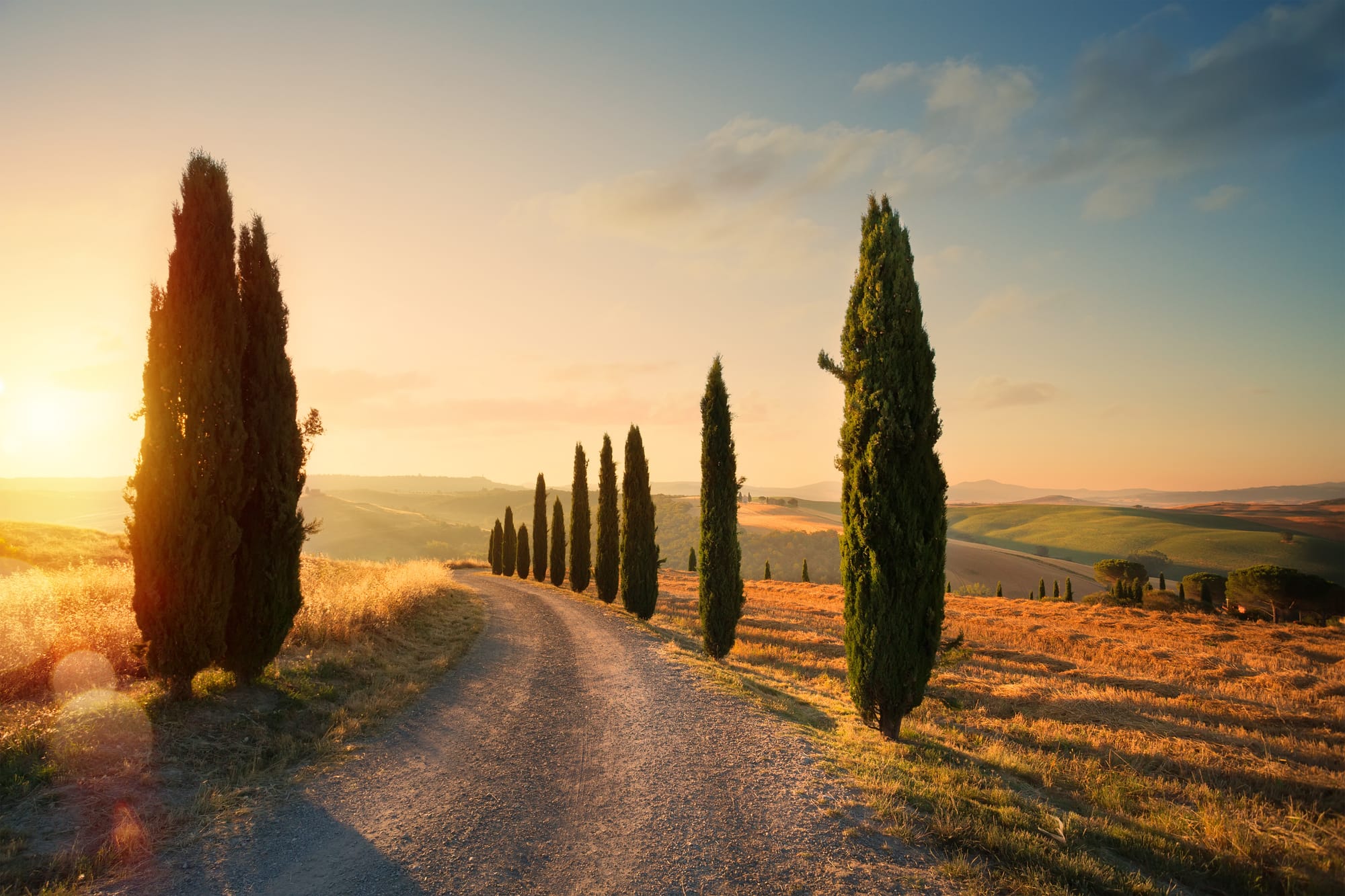
Winter in Italy (Inverno): a guide to skiing, cities & Christmas markets
Visiting Italy in winter is the savvy traveler's secret. From December through February, the country's low season offers a magical atmosphere with far fewer tourists, lower prices, and a unique set of cozy, cultural experiences. It is a season for those who seek to connect with the authentic soul of Italy, enjoying its world-famous treasures in peaceful solitude and its snowy landscapes in exhilarating style.
What is the weather like in Italy in winter?
Winter weather varies dramatically from the snowy Alps to the mild south. Dressing in warm layers is essential everywhere.
- Northern Italy: Expect cold weather, with temperatures often at or below freezing (0°C / 32°F). Snow is common in the Alps and Apennines, creating a winter wonderland perfect for skiing. Cities like Milan can be foggy and damp.
- Central Italy: Winters are generally cool and wet. Cities like Florence and Rome experience chilly weather, with occasional crisp, sunny days. Snowfall is rare but magical when it happens.
- Southern Italy & Islands: The south has the mildest winters in Italy, though it can be rainy. Coastal towns are very quiet. Sicily is a great destination for those seeking winter sun, with daytime temperatures that can be quite pleasant.
Top 10 things to do in Italy in winter
Winter unlocks a different side of Italy, offering unique activities from thrilling mountain sports to crowd-free cultural immersion. Here are the top experiences:
- Go skiing or snowboarding in the Alps: The Dolomites (part of a UNESCO World Heritage site) and the Western Alps offer some of Europe's best ski resorts, like Cortina d'Ampezzo and Courmayeur, known for their stunning scenery and fantastic food.
- Explore the enchanting Christmas markets: In December, visit the charming, German-influenced Christmas markets in Trentino-Alto Adige (towns like Bolzano, Merano, and Bressanone). Cities nationwide are adorned with festive lights and beautiful nativity scenes (presepi).
- Enjoy museums and galleries without the crowds: This is the best time of year to see masterpieces up close. Wander through the Uffizi Gallery or the Vatican Museums without the long lines and shoulder-to-shoulder crowds of summer.
- Experience the magic of Carnevale: In the lead-up to Lent (typically February), don't miss Italy's vibrant carnival celebrations. The most famous are the elegant, masked affair in Venice and the giant satirical float parade in Viareggio.
- Relax in a thermal spa (Terme): Escape the cold by soaking in natural hot springs. Visit the famous thermal baths in Tuscany (like Saturnia) or the alpine spas in Bormio for the ultimate winter wellness experience.
- Take advantage of the winter sales (Saldi): Italy's nationwide winter sales typically begin in early January. It's the perfect opportunity for some high-fashion bargain hunting in cities like Milan and Rome.
- See Rome decorated for the holidays: The Eternal City is magical during Christmas and New Year's. See the giant Christmas tree and nativity scene in St. Peter's Square and enjoy the festive atmosphere.
- Discover a quieter, more authentic Venice: Winter casts a moody, atmospheric spell over Venice. The fog (nebbia) rolling off the canals and the lack of crowds create an intimate experience that many visitors prefer.
- Indulge in cozy mountain cuisine: A trip to the north isn't complete without enjoying hearty winter food. Warm up with rich polenta, cheese fondue (fonduta), and slow-braised meat stews in a mountain lodge (baita).
- Find winter sun in Sicily: While not beach weather, Sicily offers mild, pleasant temperatures for exploring ancient sites like the Valley of the Temples without the summer heat and crowds. It's also peak season for delicious blood oranges.
What to eat in winter: Italy's comfort foods
Winter food in Italy is all about rich, hearty, and comforting dishes designed to warm you from the inside out. Be sure to try:
- Hearty soups and stews: Look for Tuscan ribollita (a bread and vegetable soup), pasta e fagioli (pasta and bean soup), and slow-braised beef dishes like brasato al Barolo.
- Polenta: This creamy cornmeal dish is a staple in the north, often served with cheese, mushrooms, or rich meat sauces.
- Cured meats and cheeses: Winter is the perfect time to sample Italy's vast array of cured meats (salumi) and aged cheeses.
- Winter produce: Enjoy seasonal vegetables like radicchio and artichokes, and in the south, the peak of the citrus season with incredible blood oranges, lemons, and clementines.
- Holiday sweets: Around Christmas, indulge in traditional treats like panettone and pandoro.
What to pack for Italy in winter
Packing for winter requires a focus on warmth and protection from the elements. A stylish but practical wardrobe is key.
- A warm, waterproof outer layer: A high-quality wool coat or an insulated, waterproof jacket is essential.
- Warm layers: Pack thermal tops, cashmere or merino wool sweaters, and warm trousers.
- Winter accessories: A hat, a warm scarf, and gloves are non-negotiable, especially in the north.
- Waterproof boots: Choose comfortable, waterproof boots with good grip, especially for walking on wet cobblestones or in snowy conditions.
- Smart attire: Italians tend to dress up, especially in the evenings. Pack a smart outfit for dinners or events.
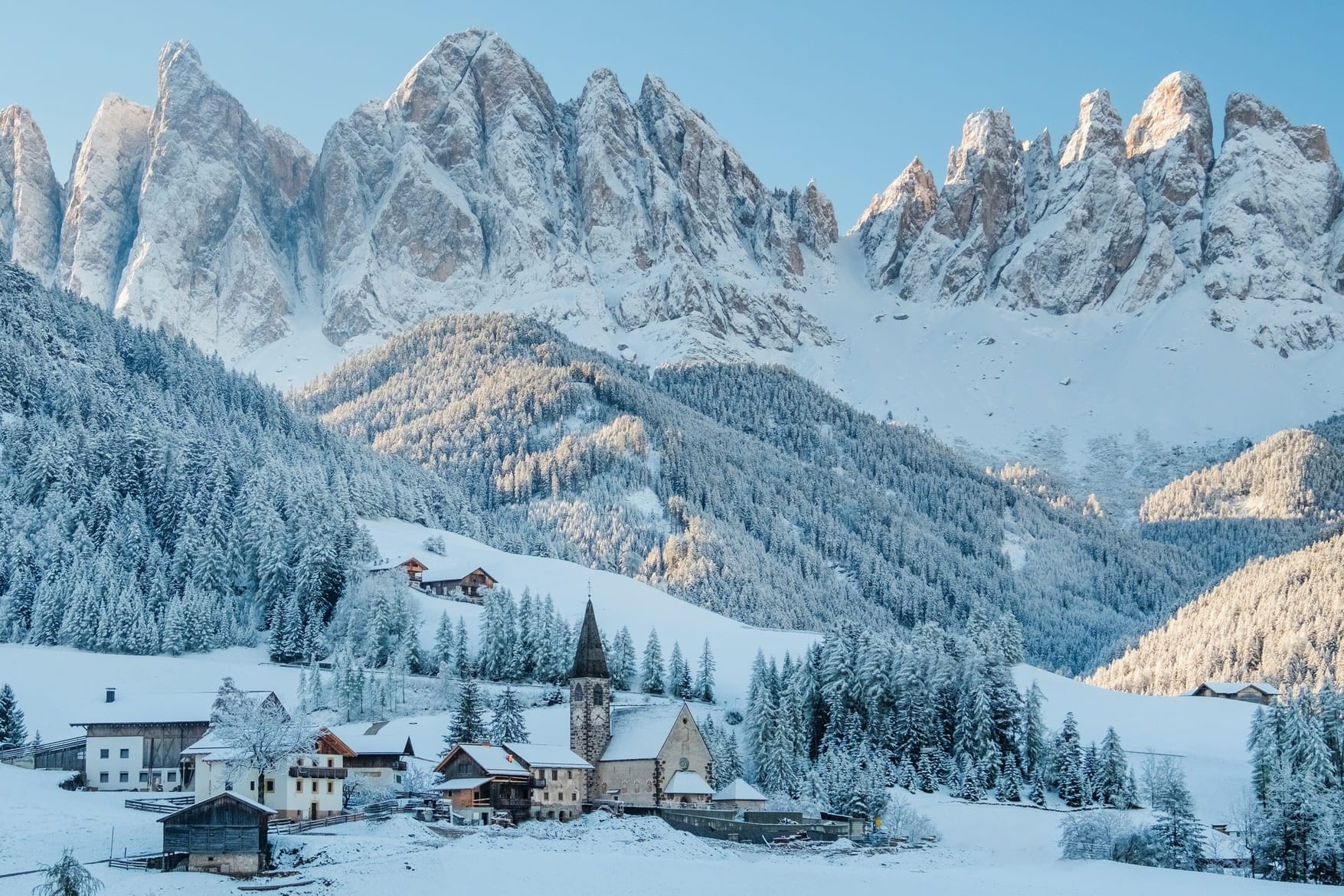
High, low & shoulder season in Italy: when is the best time to go?
Understanding Italy's travel seasons is key to planning the perfect trip. Beyond just spring or summer, the year is defined by three main periods that directly impact prices, crowds, and weather. Choosing the right one for your travel style is the first and most important step to an amazing vacation. Here’s a breakdown to help you decide.
High season (June - August): the vibrant, busy peak
This is Italy at its most energetic, sun-drenched, and expensive. It's the classic summer vacation period, ideal for those seeking lively atmosphere and perfect beach weather.
- Pros:
- ✓ Best weather for beaches, swimming, and boating.
- ✓ Longest daylight hours for sightseeing.
- ✓ All attractions, restaurants, and hotels are open and buzzing with energy.
- ✓ A full calendar of outdoor festivals, concerts, and events.
- Cons:
- ✗ Highest prices for flights and accommodation.
- ✗ Large crowds at all major tourist destinations and attractions.
- ✗ Intense, often draining heat in the major cities.
- ✗ Advance booking (months ahead) is essential for almost everything.
Low season (November - February): the quiet, budget-friendly option
This is Italy at its most authentic and affordable. It's the ideal time for budget-conscious travelers and culture lovers who want to explore museums and cities in peace.
- Pros:
- ✓ Lowest prices of the year on flights and hotels.
- ✓ Fewest crowds, allowing for intimate experiences at famous sites.
- ✓ An authentic atmosphere, as you'll be surrounded more by locals than tourists.
- ✓ Cozy ambiance, perfect for enjoying museums, operas, and hearty food.
- Cons:
- ✗ Cold, often damp and grey weather, especially in the north.
- ✗ Shortest daylight hours for sightseeing.
- ✗ Many hotels and restaurants may be closed in coastal and lake towns.
- ✗ A much quieter, less vibrant feel in many areas.
Shoulder seasons (April-May & September-October): the best of both worlds
Widely considered the "sweet spot" for visiting Italy, the shoulder seasons offer a fantastic balance of good weather, manageable crowds, and moderate prices.
- Pros:
- ✓ Pleasant, mild weather perfect for all activities.
- ✓ Manageable crowds—popular but not overwhelming.
- ✓ Moderate prices compared to the summer peak.
- ✓ Beautiful natural scenery, with spring blooms or fall colors and harvests.
- Cons:
- ✗ It's no longer a secret, so it can still be busy in top locations.
- ✗ The weather can be unpredictable, with chances of rain.
- ✗ Advance booking is still highly recommended for the best places.
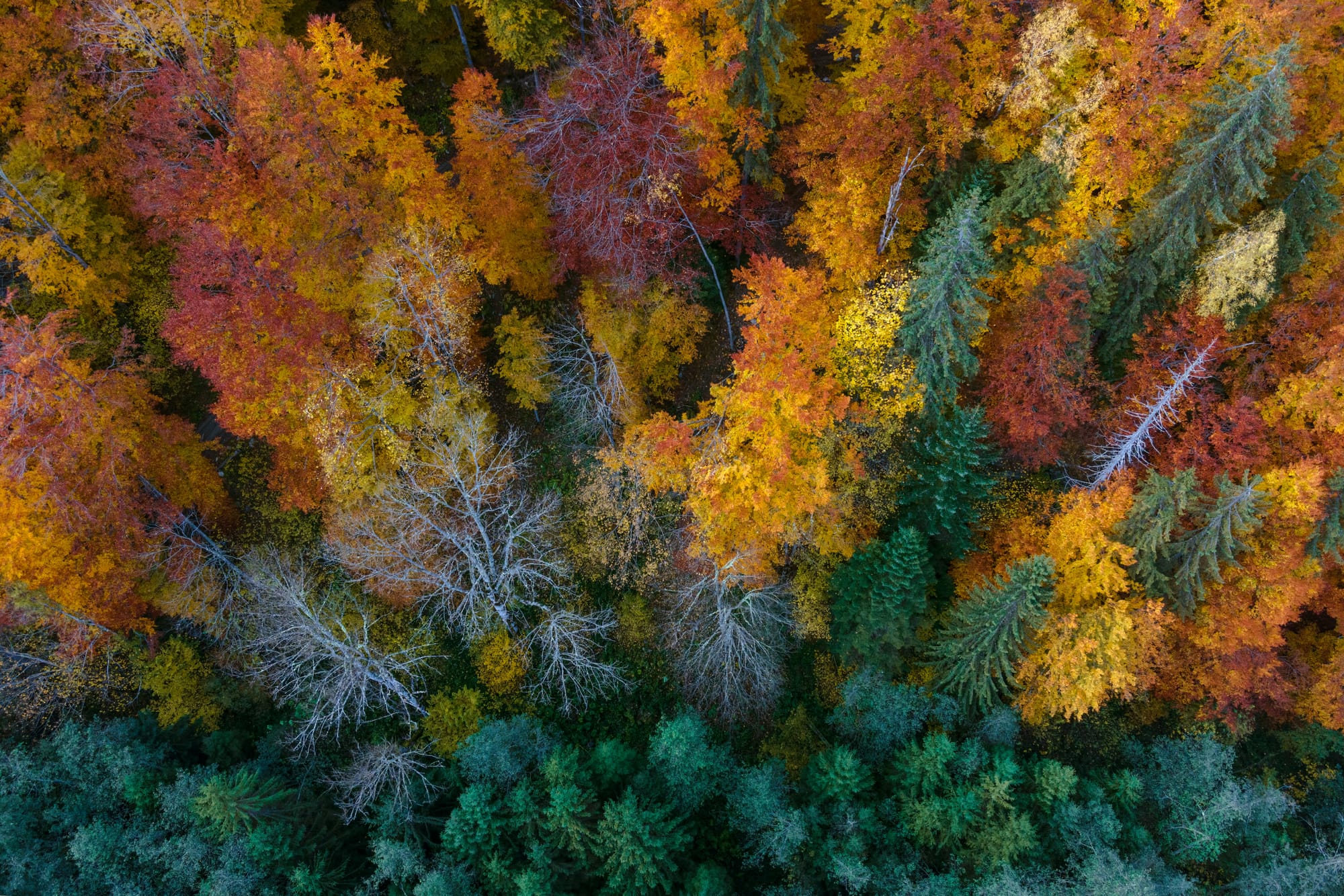
A year in Italy: key festivals & events by season
Planning your trip around one of Italy's famous festivals (feste) or food celebrations (sagre) can transform a good vacation into an unforgettable one. These events are the lifeblood of local culture and offer a unique window into the country's authentic soul. Here are some of the key events to build a trip around.
Spring events in Italy (March - May)
-
Pasqua (Easter Week):
- When: March or April (dates vary)
- Where: Nationwide, with famous processions in Trapani (Sicily) and throughout Umbria.
- Experience solemn and dramatic religious processions that date back centuries, offering a profound look into Italy's deep-rooted traditions.
- When: March or April (dates vary)
-
Infiorata Flower Festivals:
- When: May and June (coinciding with Corpus Domini)
- Where: Noto (Sicily), Spello (Umbria), Genzano (Lazio).
- Witness entire streets turned into breathtaking carpets of intricate mosaics made entirely from fresh flower petals. A photographer's dream.
- When: May and June (coinciding with Corpus Domini)
-
Maggio Musicale Fiorentino:
- When: May
- Where: Florence, Tuscany.
- One of Italy's oldest and most prestigious classical music and opera festivals, attracting world-class performers.
- When: May
Summer events in Italy (June - August)
-
Festa della Repubblica:
- When: June 2
- Where: Rome.
- Celebrate Italy's National Day with a grand military parade along the Via dei Fori Imperiali, complete with an aerial display by the Frecce Tricolori.
- When: June 2
-
Verona Opera Festival:
- When: June to August
- Where: Verona, Veneto.
- A truly magical experience. Watch world-class operas like Aida or La Traviata performed under the stars in a magnificent 1st-century Roman amphitheater.
- When: June to August
-
Il Palio di Siena:
- When: July 2 and August 16
- Where: Siena, Tuscany.
- More than a horse race, this is a passionate, bareback competition between Siena's districts (contrade) in the stunning Piazza del Campo. An intense and unforgettable spectacle.
- When: July 2 and August 16
Autumn events in Italy (September - November)
-
Venice International Film Festival:
- When: Late August to early September
- Where: Venice, Veneto.
- The world's oldest film festival brings Hollywood glamour and cinematic art to the Venetian Lido. A must for film lovers.
- When: Late August to early September
-
Alba White Truffle Festival (Fiera Internazionale del Tartufo Bianco d'Alba):
- When: October to early December
- Where: Alba, Piedmont.
- The world's most important festival dedicated to the prized white truffle, featuring markets, tastings, and medieval reenactments. A pilgrimage for foodies
- When: October to early December
-
Harvest Sagre (Food Festivals):
- When: September to November
- Where: Nationwide.
- Autumn is peak season for sagre. Look for local festivals celebrating the harvest of grapes (festa dell'uva), chestnuts, mushrooms, and chocolate.
- When: September to November
Winter events in Italy (December - February)
-
Christmas Markets (Mercatini di Natale):
- When: Late November to early January
- Where: Trentino-Alto Adige (Bolzano, Merano, Trento).
- Experience charming, German-influenced Christmas markets with wooden stalls, mulled wine, and handcrafted gifts in the stunning mountain settings of the Dolomites.
- When: Late November to early January
-
Festa di Sant'Ambrogio:
- When: December 7
- Where: Milan, Lombardy.
- The feast day of Milan's patron saint, which marks the prestigious opening night of the season at the legendary Teatro alla Scala opera house.
- When: December 7
-
Carnevale:
- When: February or early March (dates vary)
- Where: Venice (Veneto) and Viareggio (Tuscany).
- Experience Italy's pre-Lenten celebrations. Venice is world-famous for its elegant, mysterious masks, while Viareggio is renowned for its gigantic, satirical paper-mâché floats.
- When: February or early March (dates vary)
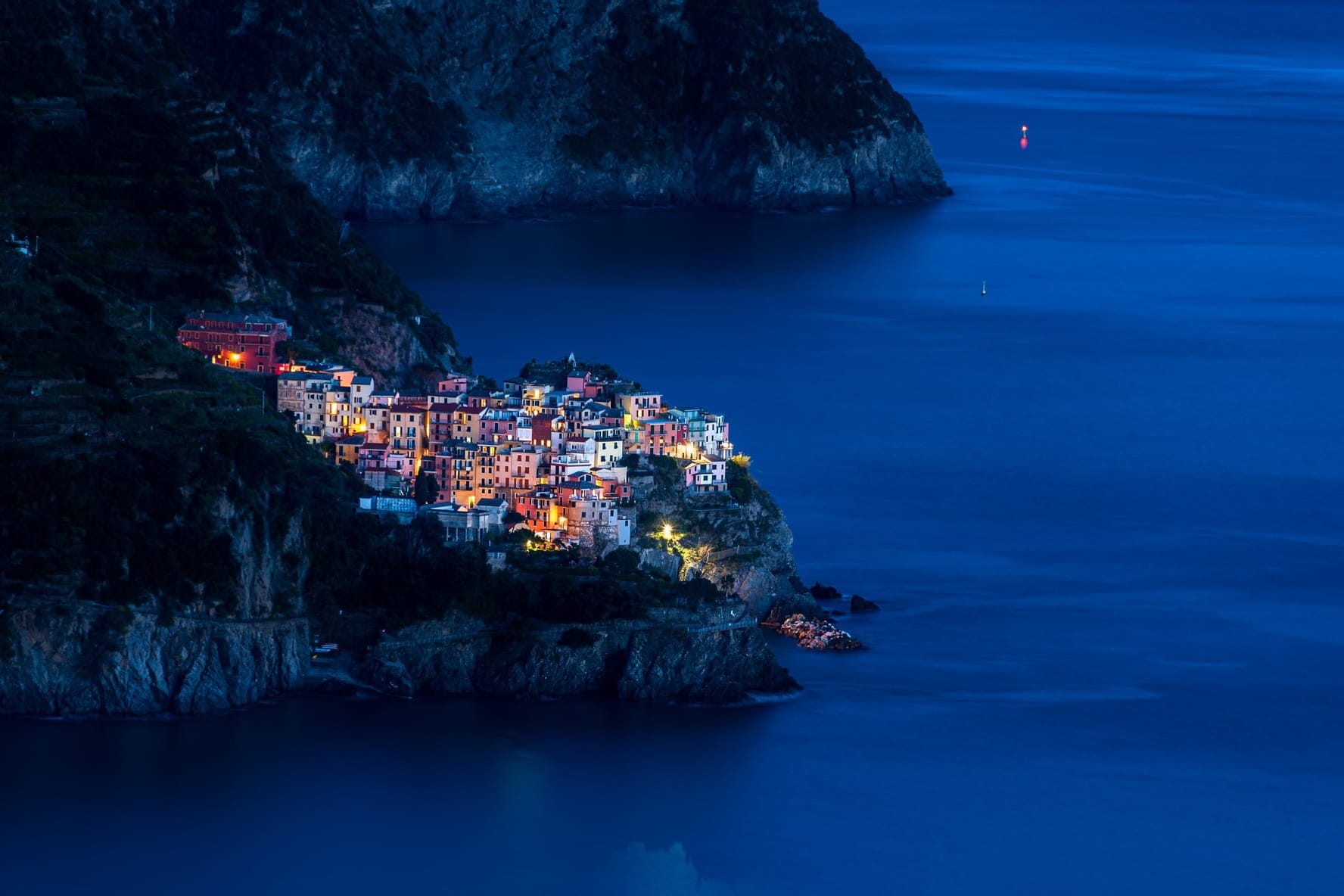
Visiting Italy: FAQs about seasons & weather
What is the cheapest month to visit Italy?
- Generally, the most affordable months are in the low season, from November to February (excluding the holiday period around Christmas and New Year's). During this time, flights and accommodation prices are at their lowest.
When is the best time to visit Italy to avoid crowds?
- The low season (November to February) offers the most crowd-free experience. If seeking better weather, the fringes of the shoulder seasons—early April, late October, or early November—provide a good compromise between fewer tourists and pleasant conditions.
Is August a bad time to visit Italy?
- August is not inherently "bad," but it presents a unique set of challenges. Travelers must be prepared for intense heat, especially in the south and in major cities, as well as peak crowds and prices in coastal areas. It's also the month of Ferragosto (August 15th), when many Italians are on vacation, meaning some family-run shops and restaurants in cities may close.
When is the best time for a food-focused trip?
- While every season has its culinary highlights, Autumn is widely considered the ultimate season for a gastronomic journey. It is the time of the grape and olive harvests, and the season for prized ingredients like white truffles and porcini mushrooms.
How predictable is the weather in Italy?
- Italian weather can be unpredictable, particularly in the shoulder seasons of spring and autumn. It is not uncommon to experience a cool, rainy day followed by a warm, sunny one. The key is to pack layers—a light jacket, sweaters, and a scarf—that can be easily adapted to changing conditions. The north-south divide also means there is no single weather pattern for the whole country at any given time.
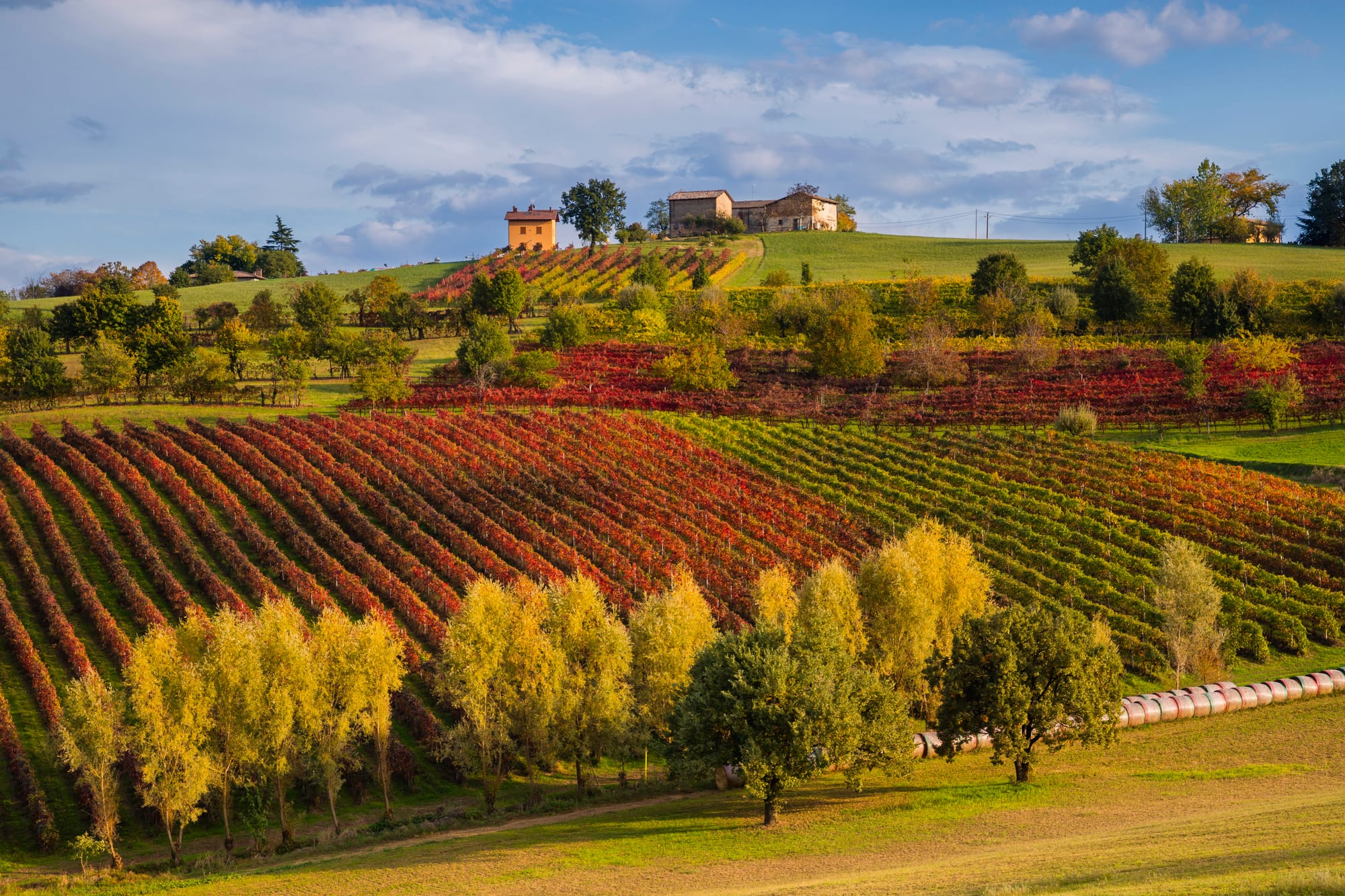
What's the best season to visit Italy for you?
Ultimately, there is no single 'best' season to visit Italy—the perfect time depends entirely on your travel style and what you want to experience. It's a personal choice that will define the entire character of your journey.
To help you decide, here is a quick summary based on what kind of traveler you are:
-
For the first-time visitor & sightseer:
Go in Shoulder Season (April-May or September-October). You'll get the absolute best balance of pleasant weather and manageable crowds at iconic sites. -
For the sun-seeker & beach lover:
Go in Summer (June-August). The energy is high, the sea is warm, and beach life is in full swing. Just be prepared for heat, crowds, and peak prices. -
For the foodie & wine connoisseur:
Go in Fall (September-November). This is the undisputed champion for harvest festivals, truffle hunting, rich flavors, and Italy's most celebrated culinary experiences. -
For the budget traveler & culture purist:
Go in Winter (December-February). You'll find the lowest prices, fewest crowds, and a unique opportunity to enjoy museums and a more authentic, local atmosphere.
Choosing your season is the first, most meaningful brushstroke on the canvas of your Italian journey. It’s the art of aligning your own pace with the heartbeat of a nation. In that alignment, you'll find not just a destination, but an Italy that feels truly your own.
Inspired to plan your journey? Find everything you need at:
- How many days do you need in Italy?
- Best attractions of Italy: a guide to its iconic and authentic sights
- The best Art Cities in Italy
- A complete guide to the 20 regions of Italy
Explore Italy like a local: here your first essential step.
